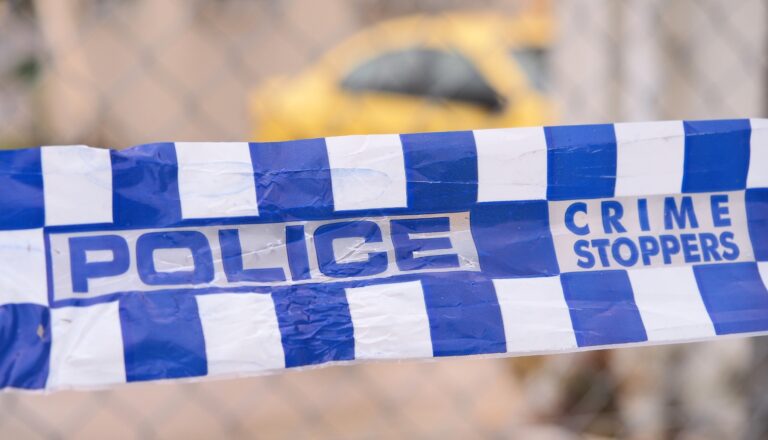
NEWS OF THE STRUGGLING NEWS BUSINESS
With the cover price of the daily Herald costing almost $1.50 per copy, stories of global financial ruin don’t come cheaply in this town. From tales of collapsed banks to shots of shuttered factories, business failures regularly make page one news. But when it comes to reporting the struggling business of reporting the news, the local media is not as vocal. On April Fools’ Day, the Sydney Morning Herald, the Melbourne Age, the Australian and the Australian Financial Review all reported that the nation’s newspaper industry is in excellent health.
Through the daily newspaper industry’s own trade cartel called the Newspaper Works, Australia’s four largest newspaper publishers (Fairfax, APN, West Australian Newspapers and News Limited) jointly reported their newspaper revenues for 2008. Accounting for 95% of the total newspaper market in Australia, these four conglomerates reported advertising revenues were only down 0.6 per cent from $AU4.076 billion in 2007 to 4 billion in 2008. By comparison, ad revenues in the US fell by a staggering $US7.5 billion from 2007 to 2008, a 17.7% decline. And in Britain newspaper ad revenues fell 12 per cent. Compared with other English speaking markets, Australia’s decline of $AU76 million looks like pocket change. But ominous storm clouds hang over 2009: as the Australian reported at the very end of its April Fools’ story, “A report from Royal Bank of Scotland media analyst Fraser McLeish released last week predicted metropolitan newspaper advertising [in Australia] would be the hardest hit of all the media in the six months to June this year, falling 15.9 per cent” Which means Australian daily newspapers are facing the same revenue falls currently besetting their counterparts in the US and UK.
While they would have you think otherwise, Australia’s media moguls are having one hell of a year. Last year the patriarch of the Fairfax newspaper dynasty, John B Fairfax merged his own newspaper company Rural Press with Fairfax Media, and borrowed $AU170 million to buy out his family’s shares in the business. Just one year later, his holdings in Fairfax are worth $650 million less, leaving JB with stocks valued at just $200 million, against borrowings of $170 million. Fairfax Media faces unprecedented financial challenges. In May, the company was given a junk credit rating after advertising revenues dropped by 28 per cent, a fall of more than $230 million for the year. To offset the losses, the company slashed 550 jobs and has placed a freeze on executive salaries in 2009-2010. Earlier this year Fairfax raised much needed capital by selling $650 million worth of shares at a significantly reduced price, still leaving the company with $1.8 billion in debt. The capital raising exercise saw JB Fairfax’s share of his family’s former business drop by nearly one third from 14 per cent to less than 10 per cent. Under the terms of his one-year-old takeover bid, JB had the option to purchase a further 130 million shares, but as the competing Australian gleefully noted. “Last month, Mr Fairfax’s difficulties were on display when he took up just 16 million new Fairfax Media shares worth $12 million in the media group’s cut-price capital-raising.” In January, the Australian reported JB was forced to mortgage his eastern suburbs family mansion for an estimated twenty-something million dollars, presumably to fund his second share purchase.
Not that JB’s primary competitor, the owner of the Australian — Rupert Murdoch has much reason to gloat. Over at News Corpse, share values have fallen by half when valued in Australian dollar terms. And in US dollar terms, they have fallen by 70%. In May News reported profits had fallen by 47 per cent in the previous three months after a 42 per cent loss from January to March. In order to suture some of the company’s bleeding, News sold off a pay TV technology subsidiary for $US1.2 billion ($A1.62 billion) thus posting a profit of $US755 million compared with $US1.4 billion in the same period last year. News cut a massive 3000 jobs in 2008, but Murdoch declined to reveal how many jobs were slashed in Australia, where the newspaper group’s advertising revenues have fallen by 16% in the last three months alone.
In the face of such a brutal advertising market, it is little wonder that the relative newcomer to Sydney, Time Out has been forced to reduce its frequency once again. Six months ago, the magazine went from weekly to fortnightly. Starting in May, the what’s on publication now only appears monthly, no doubt impacting its ability to generate accurate events listings and vital cash flow. The retreat follows troubles at London Time Out, which leases the right to publish Time Out here in Sydney. Earlier this year, the flagship London magazine’s editor, theatre editor, television editor, nightlife and deputy film editors were all given redundancies and circulation has fallen to 67,000 from a peak of 110,000 in 1995. Across the pond, The New York edition of Time Out has been put up for sale. As the Times of London reported earlier this year, “Tony Elliott owned the London publication ever since [he launched it in 1968] and has gradually expanded the brand internationally. However, a lack of capital – partly stemming from a refusal to sell any shares in the original business – has meant that he does not own most of the international editions, which are published by third parties under licence. ” Lets hope those franchise fees have been reduced as the publication’s frequency is scaled back here in Sydney.









